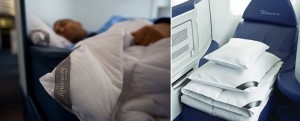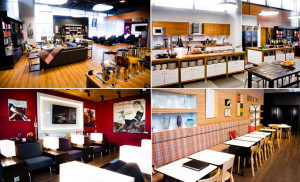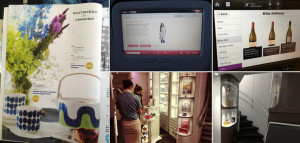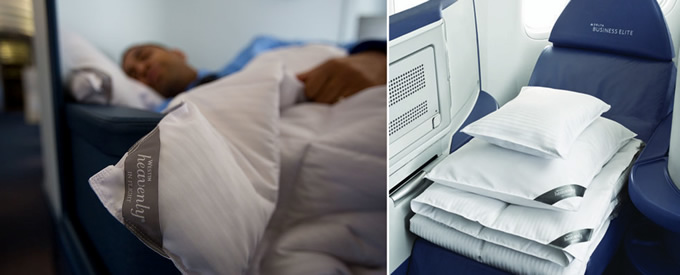 This article is re-published with kind permission of “www.airlinetrends.com”.
This article is re-published with kind permission of “www.airlinetrends.com”.
As ancillary revenues have become a major revenue source for airlines – if not the lifeline for many – airlines are thinking of more ways to derive revenue from all phases of the customer journey.
For example, a growing number of full-service airlines now monetizes seat selection and checked luggage, while some offer Economy passengers the option to pre-order paid gourmet meals on long-haul flights.
Another revenue opportunity lies in making the onboard retail offering more appealing.
Or as trendwatcher James Woudhuyzen put it in a straightforward way in Onboard Hospitality Magazine:
“Sell things people actually want to buy, so when the flight attendant announces ‘Duty Free Goods’ it isn’t in a tone that shows she fully expects zero sales.”
Try before you buy

One tactic that airlines may consider is the concept of ‘tryvertising’.
Coined years ago by trend research agency TrendWatching, the idea is to take product placement to the real world by integrating products into the daily life of consumers so they can make up their minds based on their actual experience with the products.
Hotels were among the first to embrace this ‘tryvertising’ approach.
Most of the major hotel chains now have an online store selling everything from bubble baths to beds. The concept received a boost when Westin in 1999 introduced its Heavenly Bed, which received very positive reviews from guest who often inquired whether they could purchase the bed they had just slept in.
Recognizing that its hotels could also serve as a showroom for mattresses and other comfort items, Westin says it has sold over USD 135 million worth of Heavenly Bed-related goods in the past 15 years, including 100,000 mattresses and 175,000 pillows.
A similar concept is the Almost@Home Lounge at Helsinki Airport. Visitors of the lounge can purchase any item – artwork, furniture, glass and tableware – found in the lounge that takes their fancy, making it a ‘tryvertising’ space for home decoration.
Brand partnerships
 In the airline industry brand partnerships are an economical way for airlines to provide a premium service.
In the airline industry brand partnerships are an economical way for airlines to provide a premium service.
Airline passengers are an interesting demographic for consumer brands looking for ways to let consumers experience their product in a relevant setting.
A well-known example is Delta’s partnership with Westin. With its ‘Westin Heavenly In-Flight Bedding’, Delta can offer passengers in Business a quality product, while for Westin it is a smart way to let Delta passengers try its sleeping products.
On a similar note, SAS has partnered with iconic Scandinavian brand Hästens to develop patterned bed linen pillows and blankets, as well as a mattress padding.
However, both airlines don’t allow passengers to purchase the branded duvets and pillows – for example via the inflight wifi portal or via a coupon in the duty free catalogue – which looks like a missed revenue opportunity.
Taking a more pro-active approach in offering passengers the option to purchase a product they have just experienced onboard is Finnair. The flag carrier is well-known for its collaboration with Finnish design house Marimekko and several of the colourful table-wear and fabric designs can also be purchased onboard. On Finnair’s A350s, passengers can also access the ‘Nordic Sky’ inflight portal with their own device and pre-order an item for delivery to their seat during their return flight.
On a similar note, EVA Air cooperated with Taiwanese graphic designer Xiao Qing-Yang to create a table cloth and pillows in Business Class which can be purchased via EVA Air’s in-flight shopping catalogue.
Virgin America, meanwhile, a few years ago collaborated with fashion retailer Banana Republic to design a new uniform line for crew, pilots, and ground staff. The companies also designed a travel-inspired collection of bags, trench coats and sunglasses which were available exclusively to passengers through Virgin America’s IFE-based RED shopping platform.
And no doubt, many airlines also prominently display the cosmetics brands featured inside the amenity kits in their inflight duty free catalogues, while the Bose noise-cancelling headphones that airlines provide to their passengers in First result in increased sales of the headsets onboard.
One last example comes from Air New Zealand, which recently introduced a novel feature to its IFE system. Passengers can now order and pay to have a case of the wine they have just sampled inflight delivered to their home.
Aviation journalist John Walton summarizes things nicely:
“It strikes me that 2016 will see more onboard shopping opportunities as more airlines roll out increasingly capable inflight entertainment systems. But the trick for many airlines will be to simultaneously ensure that the shopping is brand-positive — less SkyMall, more curated and unusual offerings.”

